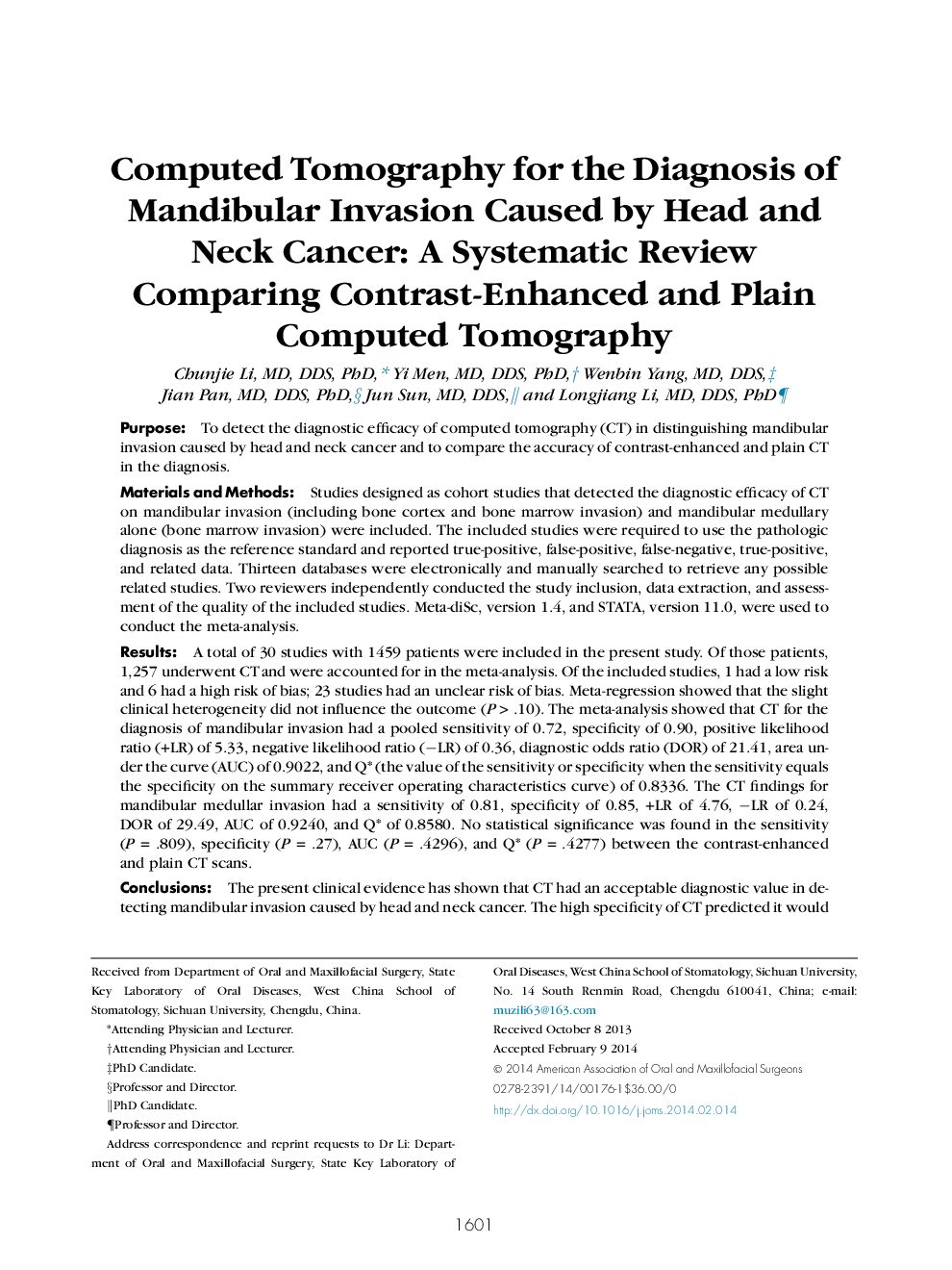| Article ID | Journal | Published Year | Pages | File Type |
|---|---|---|---|---|
| 3156279 | Journal of Oral and Maxillofacial Surgery | 2014 | 15 Pages |
PurposeTo detect the diagnostic efficacy of computed tomography (CT) in distinguishing mandibular invasion caused by head and neck cancer and to compare the accuracy of contrast-enhanced and plain CT in the diagnosis.Materials and MethodsStudies designed as cohort studies that detected the diagnostic efficacy of CT on mandibular invasion (including bone cortex and bone marrow invasion) and mandibular medullary alone (bone marrow invasion) were included. The included studies were required to use the pathologic diagnosis as the reference standard and reported true-positive, false-positive, false-negative, true-positive, and related data. Thirteen databases were electronically and manually searched to retrieve any possible related studies. Two reviewers independently conducted the study inclusion, data extraction, and assessment of the quality of the included studies. Meta-diSc, version 1.4, and STATA, version 11.0, were used to conduct the meta-analysis.ResultsA total of 30 studies with 1459 patients were included in the present study. Of those patients, 1,257 underwent CT and were accounted for in the meta-analysis. Of the included studies, 1 had a low risk and 6 had a high risk of bias; 23 studies had an unclear risk of bias. Meta-regression showed that the slight clinical heterogeneity did not influence the outcome (P > .10). The meta-analysis showed that CT for the diagnosis of mandibular invasion had a pooled sensitivity of 0.72, specificity of 0.90, positive likelihood ratio (+LR) of 5.33, negative likelihood ratio (−LR) of 0.36, diagnostic odds ratio (DOR) of 21.41, area under the curve (AUC) of 0.9022, and Q* (the value of the sensitivity or specificity when the sensitivity equals the specificity on the summary receiver operating characteristics curve) of 0.8336. The CT findings for mandibular medullar invasion had a sensitivity of 0.81, specificity of 0.85, +LR of 4.76, −LR of 0.24, DOR of 29.49, AUC of 0.9240, and Q* of 0.8580. No statistical significance was found in the sensitivity (P = .809), specificity (P = .27), AUC (P = .4296), and Q* (P = .4277) between the contrast-enhanced and plain CT scans.ConclusionsThe present clinical evidence has shown that CT had an acceptable diagnostic value in detecting mandibular invasion caused by head and neck cancer. The high specificity of CT predicted it would be helpful when it was used to confirm the clinical diagnosis of bone invasion. Contrast-enhanced and plain CT scans had a similar diagnostic efficacy.
